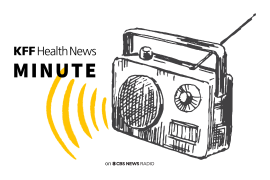Home Health Care For Frail Aging Patients Pushed By Group Of Doctors
Research has shown that home care can lower costs and hospitalization rates. In other news on senior health care, The New York Times looks at the growth of robotic health aides. And in other medical practice news, media outlets report on the rules dictating residents' hours, the rise of scribes in doctor offices and coroners facing a backlog.
The Washington Post:
Doctors Prescribe Old-Fashioned House Calls When Treating The Old And Frail
A study published last year in the Journal of the American Geriatrics Society, supported by other research, found that home-based primary care lowered costs as well as emergency room visits and hospitalization rates while increasing patients’ satisfaction with care. Now, a group of doctors — including Hernandez’s — is pushing to bring house calls to the nation’s 2 million oldest, frailest and costliest patients, saying it has the potential to save the government billions of dollars. Independence at Home was developed by a group of doctors around the country who were already making house calls to such patients. (Bahrampour, 12/6)
The New York Times:
As Aging Population Grows, So Do Robotic Health Aides
The ranks of older and frail adults are growing rapidly in the developed world, raising alarms about how society is going to help them take care of themselves in their own homes. Naira Hovakimyan has an idea: drones. ... Her research is just one example of many approaches being studied to use technology to help aging people. (Markoff, 12/4)
NPR:
Is It Safe For Medical Residents To Work 30-Hour Shifts?
Since 2003, strict rules have limited how long medical residents can work without a break. The rules are supposed to minimize the risk that these doctors-in-training will make mistakes that threaten patients' safety because of fatigue. But are these rules really the best for new doctors and their patients? There's been intense debate over that and some say little data to resolve the question. So a group of researchers decided to follow thousands of medical residents at dozens of hospitals around the country. (Stein, 12/7)
Kaiser Health News:
Jobs For Medical Scribes Are Rising Rapidly But Standards Lag
A national campaign for electronic health records is driving business for at least 20 companies with thousands of workers ready to help stressed doctors log the details of their patients’ care — for a price. Nearly 1 in 5 physicians now employ medical scribes, many provided by a vendor, who join doctors and patients in examination rooms. They enter relevant information about patients’ ailments and doctors’ advice into a computer, the preferred successor to jotting notes on a clipboard as doctors universally once did. (Gillespie, 12/7)
The Associated Press:
Families Suffer As Medical Examiners Struggle With Backlogs
One of the most difficult things about losing her son was not knowing why. Rosanne Carruthers needed to understand how an active, outdoorsy man with no apparent health problems could drop dead at 34.
Carruthers, a nurse, performed CPR after her son, Neil, collapsed in their suburban Boston home. For more than a year, she wondered: Was there something more she could have done? And were her daughter and her grandchildren at risk, too? For the Carruthers family and others across the country, long delays in receiving death certificates and autopsy reports from medical examiners can not only compound grief, but also can create financial hardships by holding up life insurance payouts and other benefits. The delays are driven largely by underfunding, a severe shortage of medical examiners and relatively low pay when compared with other medical specialties. (Lavoie, 12/7)






